If you’re reading this, you’re probably someone who is concerned about the climate crisis. And you might have wondered, “But what can I do about it?” (or “What should I be urging government and business leaders to do about it?”) If so, you’re not alone. These are excellent and frequently asked questions. And answers are out there—but some are more informed, concrete, and constructive than others.
 Often, these questions are asked by people who either: A) have been too busy dealing with other responsibilities or activities in their lives to spend much time learning about climate issues, and who genuinely don’t know what the primary causes of and solutions to climate change are, or B) are highly informed about climate issues and are overwhelmed by the wide range of contributing factors and potential solutions, to the point of decision paralysis. Regardless of whether the questions stem from a lack of relevant knowledge or an abundance of knowledge and overwhelm, almost everyone wants to know which climate actions would be the best, most effective uses of their limited time and money.
Often, these questions are asked by people who either: A) have been too busy dealing with other responsibilities or activities in their lives to spend much time learning about climate issues, and who genuinely don’t know what the primary causes of and solutions to climate change are, or B) are highly informed about climate issues and are overwhelmed by the wide range of contributing factors and potential solutions, to the point of decision paralysis. Regardless of whether the questions stem from a lack of relevant knowledge or an abundance of knowledge and overwhelm, almost everyone wants to know which climate actions would be the best, most effective uses of their limited time and money.
A small percentage of people who ask “What can I do?” are only asking in a rhetorical way, and they don’t really want answers or plan to do anything. Some folks are so attached to the status quo that they would rather say that “nothing can be done” than consider changing any norms or habits. But we know the situation is not hopeless and we are not helpless. We all have agency to make a difference, and most of us realize that widespread inaction will consign us and future generations of all species to a wretched future.
Fortunately, most people really do care and want to do something (and want our leaders to do more). A study found that most of us wildly underestimate other people’s level of climate concern and their support for climate action. But the vast majority of people in the world—more than 76% of Americans, and more than 86% of people worldwide—are concerned about the climate, approve of pro-climate social norms, and want more political action on climate. (See: 2024 study published in Nature Climate Change, and an article about it in Carbon Brief).
That said, concern, good intentions, pledges, and commitments are not enough. These must be converted into actual action. And we can’t leave it to others (or rely solely on our leaders) to do this for us. There’s no more time for delay. We need all hands on deck now—which brings us back to the “What can I do?” question. I think that the moment after this important question gets posed is the critical juncture where climate progress too often gets stuck. Too many people are not seeing or hearing (or finding) answers that are specific or substantive enough, in the media or online or from peers. Many people don’t have the time, energy, or knowledge base to do this type of deep research or to figure out how to interpret or implement vague or wonky recommendations. That’s why my aim is to provide some clear guidance and direction—nuts-and-bolts information that can help people move forward and turn climate concerns into concrete actions. Thus, I’ve provided a Climate Action Starter Pack (below).

There are so many ways we can make a difference, on our own or as part of a collective effort. Each of us can take actions within our various roles: 1) as citizens, who have the power and responsibility to engage with and speak up to our representatives, governments, and other institutions, 2) as members of our assorted social circles, networks, and communities, including our workplace; and 3) as individuals, family members, and consumers. As I see it, those roles translate into these general categories:
- Systemic/Civic Actions
- Social/Community Actions
- Personal/Household Actions
Arguably, the changes we push for and achieve in those first two areas—influencing and working with others, and demanding policy changes and actions from government, businesses, institutions, and other entities—will have the biggest impacts and are therefore the most necessary. Clearly, one household’s lifestyle changes won’t be enough to change the world or stabilize the climate. However, there is an interplay among all three of these areas, and we should not discount the powerful ripple effects that our personal actions and choices can generate. They can set a needed example for and inspire our peers (people are much more likely to do something if they know someone who has already done it) and they send beneficial demand signals to “the market.” And admittedly, it can be easier or more immediately gratifying to make personal/household changes that are well within our control than to try to shift policies and systems, which requires a sustained, collective effort. Ideally, we can each find a good balance of actions within all of these realms, from macro to micro.

Climate actions and choices can include things To Do and things Not To Do. They can be high-tech or low-tech/no-tech (which is often preferable). And they can be no-cost, low-cost, money-saving, or higher-cost (and high payoff) investments. Many people assume that all climate-smart choices are going to be expensive or complicated or require huge sacrifices. But many of them are none of those things. Some climate actions might require a little thought, effort, or time, but many will save you (and society) money and improve quality of life.
There are literally thousands of things any of us could be doing to mitigate climate change, but it’s not possible for any of us to do all of those things, let alone all at once. All we can do is start somewhere, where we are, and do whatever each of us can do, and then do more when we can. We don’t all need to do the same things, but we do all need to do something, and it makes sense to try to do some of the things that will make the biggest difference.
Climate Action Starter Pack
This guide includes some of the most important climate actions you can take, some of which are also easy and money-saving. This is not an exhaustive list of actions. It’s a set of recommended actions—a menu of options that can help you build your own Climate Action Plan. Many are basic, beginner level actions and some are intermediate (i.e., they might require more time or money).
You may already be doing a number of things that help slow climate change. You might find it motivating to make a list of the things you have done or are doing and check off the suggestions below that you already engage in, and then identify some ways you want to build on those steps.
No one would expect anyone to take every action in this post. I recommend picking 2-3 actions to focus on at first, to make it manageable. Then once you make progress on those, add a couple more. You could set reminders and deadlines for yourself and regularly update your plan. Aim to add more actions each month, quarter, or year. It could be helpful to do this with others in your household or with a group of friends or neighbors, for support and accountability.
Every climate advisor’s list of top actions will look a little different. I have developed these suggestions using a combination of sources, including Project Drawdown’s scientific analysis of top climate solutions, plus the Emergency Brake measures they identified (which are ways to make the deep emissions cuts that are needed immediately), as well as a Swedish study on the most effective individual actions for climate mitigation. And I’ve added my own commentary throughout on other important actions and “low-hanging fruit” (i.e., easy/quick, or free/low-cost choices), and some practical tips (and links) on how to implement the solutions.
I am presenting these suggestions within the three main categories that I mentioned above, but in the reverse order, from micro to macro: Personal/Household, then Social/Community, and then Systemic/Civic actions. However, please feel free to switch up the order and start with the broader systemic or community-level actions first. Or better yet, pick at least two solutions within each of these categories when creating your own Climate Action Plan.
NEW: Download our Climate Action Plan Checklist here. The checklist provides an easy way to keep track of the actions you’ve taken and actions you plan to do. The following section provides a more detailed description of the items on the checklist:
I. Personal/Household Actions (and Choices)
To take actions that make the biggest difference (in terms of climate impact), you could prioritize your actions based on Project Drawdown’s science-based solutions. Two of the most effective, high-impact solutions that they identified through their methodology are related to food: Reduced Food Waste and Plant-Rich Diets. These are some personal actions you can take in those two areas:
- Reduce food waste: Refer to the numbered list in our recent Food Waste post.
- Shift to a more plant-based diet, i.e., eating less (or no) meat and dairy (a shift which also happens to be good for our health—as well as for the welfare of animals, and for land and water conservation): It’s easy to find delicious recipes online for meatless/vegetarian and dairy-free, vegan dishes, as well as vegetarian and vegan restaurants (those are search categories on Yelp), and plenty of information on protein-rich, plant-based or “plant-forward” diets. I’ve shifted to a mostly vegetarian and increasingly vegan diet. It’s gotten easier to do over time and I don’t feel like I’m depriving myself; I almost never crave meat anymore.
Click here for other top solutions identified by Project Drawdown. One of the other top solutions is Family Planning and Education. (Please check out our new post on women’s organizations and initiatives.)
Drawdown has also identified some “Emergency Brake” measures: “the fastest, largest, lowest-cost climate solutions we can deploy—right now” to make the deep emissions cuts that are needed immediately. Below, I’ve suggested some specific personal actions you can take to effect change within each of the Emergency Brake areas. Some of these actions are easier and cheaper than others; you might put a couple of these in Phase II of your Action Plan, and many are best addressed through Systemic/Civic actions (which appear later in this post):
- Reduce deforestation: Only buy paper products (e.g., toilet paper, printing paper) that are FSC-certified or 100% recycled content, and reduce your use of disposable paper towels and napkins by using sponges/rags and washable cloth napkins. Only buy wood products (e.g., lumber, furniture, etc.) that are FSC-certified or reclaimed or used. Also, avoid products that contain palm oil (or non-organic soy, which is often grown in the Amazon region), when possible; palm oil and soy plantations—along with cattle grazing—are some of the primary drivers of global deforestation.
- Reduce potent, short-lived greenhouse pollutants such as nitrous oxide, “black carbon”/soot, and methane: Don’t use synthetic/chemical fertilizers and pesticides (which produce high levels of nitrous oxide), and do buy or grow organic food. Replace gas-powered lawn equipment (e.g., mowers and leaf blowers) with battery/electric equipment (or even better, reduce or eliminate your need to mow by replacing your grass lawn with native groundcovers or a garden, and “leave the leaves” or use them as mulch on your plants); and avoid using vehicles fueled by diesel and avoid burning wood (and charcoal) as much as possible (because these contribute to “black carbon” emissions). And if/when you can, switch from “natural gas” (methane) to electric equipment and appliances (e.g., stoves, furnaces).
- Increase energy and fuel efficiency: Switch to highly energy-efficient equipment and appliances (e.g., Energy Star certified), which sometimes qualify for utility rebates or tax credits/deductions; weatherize/insulate your home, and adopt energy-saving habits (note: conserving water also helps save energy). To avoid excessive energy consumption, also avoid buying cryptocurrency/bitcoin or using unnecessary AI tools. Choose fuel-efficient vehicles (non-oversized vehicles that ideally are electric or hybrid; or electric bicycles and scooters/motorcycles)—or better yet, drive less overall, e.g., telecommute or reduce your commute distance, ride a bike, walk, take mass transit, or carpool.
- Reduce all types of waste: Reduce your purchases of new materials/products, and reduce material and packaging waste (as well as food waste—see above). Always reduce first (i.e., don’t buy what you don’t need), then reuse/repair what you have, and buy used or salvaged items or borrow/rent items when you can. (Note: There are local Buy Nothing groups all over, where people give their used items away for free, and some places have a “Library of Things” or “Tool Library” or other venues where sharable items can be loaned or rented out). Lastly, recycle what you can. But be aware that many things are not readily recyclable, most plastics never actually get recycled and are shipped overseas, and recycling requires energy, plus melting down some materials—like plastics—can produce toxic emissions. It’s particularly important to avoid buying new plastic items (especially single-use, disposable items and all PVC items) and products with plastic packaging, as much as you can; I know this one isn’t easy, since plastic is everywhere. Plastics are made from toxic petrochemicals (fossil fuels) and they are a massive threat to environmental and public health, as well as the climate.
I want to expand on #4. I think it’s accurate to say that Buying Less Stuff is one of the most important things that all of us can do. In America, in particular, we are constantly pushed to buy, buy, buy—by companies and their advertisers, and also by our peers (or just from feeling like our social status depends on “keeping up with the Joneses”). People in the U.S. consume much more, on average, than people in any other country. The ultra-wealthy consume the most by far, but most middle-class Americans also buy way more than we need. Our materialism and gross over-consumption greatly affect our climate and cause the degradation of all aspects of our environment. A study published in the Journal of Industrial Ecology found that, globally, the stuff we consume (buy) is responsible for up to 60% of global greenhouse gas emissions and between 50 and 80% of total land, material, and water use. Everything that’s made has its own carbon footprint (“embodied energy”) and environmental impacts—throughout each stage of its lifecycle, from raw materials extraction through manufacturing and use and finally disposal, via landfill or incineration (neither of which makes anything go “away”—it just ends up in our air or soil and water).
Using a different methodology than Project Drawdown, an earlier study from Sweden— which specifically focused on identifying the most effective individual actions for climate mitigation—found that the choices that will most affect your own contributions to climate change are:
- how many kids you have (particularly if you live in a high-income, high-consumption, high-waste country like the U.S.)—This decision has a much bigger climate impact than any other we can make as individuals.
- how much (how often and how far) you drive and fly;
- how much energy you use in your home and how much of the energy you/your utility company use is from clean, renewable sources vs. dirty sources [Note: If your utility does not use much renewable energy yet, they might offer a program you can sign up and pay for that helps support the development of renewable energy projects in your region, an option that would be considerably less expensive than adding solar panels to your own home, though that’s also a great solution and investment if you have the means, as is getting a highly efficient heating/cooling system, e.g., a “heat pump”];
- how fuel-efficient your vehicle (or the vehicle you are driven in) is; and
- how much meat you eat.
Many of those synchronize nicely with Project Drawdown’s top 5-10 solutions, even though Drawdown’s are not focused only on personal, individual-level actions. For more details on the Swedish study’s findings, click here (and scroll down to Part II of that post).
The final suggestion I would add to this list of Personal Actions is to think about which particular sectors or types of climate solutions you are most interested in or passionate about. Project Drawdown breaks the sectors down into: Electricity; Food, Agriculture, and Land Use; Industry; Transportation; Buildings; Land (Carbon) Sinks; Coastal and Ocean (Carbon) Sinks; Engineered Carbon Sinks; and Health and Education. You also might want to think about the skills, strengths, and resources you have that you can apply to the climate effort. Check out Ayana Elizabeth Johnson’s Climate Action Venn Diagram (and her TED talk) to jump-start your brainstorming. And OneGreenThing offers a free, quick “Service Superpower Assessment” quiz to enable you identify the “service type that best suits your personality.” Tools like these could help you pinpoint specific actions or approaches that are a good match for you and your unique set of interests and attributes.
Also check out the Climate Action Resources section towards the end of this post for links to tools and resources that provide additional guidance on taking climate actions.
II. Social/Community Actions
These are some ways to engage socially and as a member of your various social circles, networks, and communities (online and off), to help contribute towards cultural shifts:
- Follow and plug into one or more of the many climate groups or initiatives that already exist. This is one of the best ways to get started, (This suggestion also has relevance to the Personal and Systemic categories of actions.) Find some climate organizations that have a strategy or tone that resonates with you or that seem like a good match for your particular interests. Follow a few groups, and then join or support at least one group—it could be national, international, or local. (Also support youth and girls’ education initiatives, family planning initiatives, and women’s rights groups—in your country and worldwide.) In addition, start following and reading some fact-based climate information/news outlets: see the Climate Resources list at the end of our previous post, and go to the last section of this post for links to some Climate Action Groups, Apps, Newsletters, and Books.
- Share climate information from the organizations and media you follow, with your friends and social networks online or off. Or you could start by sharing some of the information provided in this post. Also talk about and share your own climate concerns and feelings with your friends and family; in addition to alleviating some of the weight of those feelings, expressing them will help let others know they aren’t alone (since most of us underestimate other people’s level of concern). You could also share some of the actions you’re taking and offer encouragement and support for others to take their own actions.
- Find (or establish) a climate or environmental group in your community—at your school, workplace, place of worship, and/or in your neighborhood or town. (If you decide to start one, you might consider starting it as Book+Action Group. See book suggestions towards the end of this post.) To identify specific actions to implement with your group, you could refer to the actions suggested in the Personal/Household and Systemic/Civic sections of this post, and discuss ways to apply a few of those within your group or community.
- “Make your job a climate job” or find ways to incorporate climate criteria and actions into the company/organization you work for: Check out Project Drawdown’s Job Function Action Guides for various types of employee roles and positions. (Also, IT specialists, therapists, and architects can find job guides in this Climate Action Resource Library.)
- Food-based solutions: Ask owners/managers of local grocery stores and restaurants (and your school or workplace cafeteria program, if applicable) what they do with their excess food, and ask them to donate their extra produce or other items nearing their expiration dates to local food pantries (or to sell them to overstock stores). Ask your local restaurants (and cafeterias) to offer more non-meat options (and to use more local and organic ingredients). Cafeterias could do “meatless Mondays” (or even go meatless every other day or always); I would also suggest that they should try to procure organic (and locally-grown) foods. And lastly, when hosting a group or having a party, serve plant-based (vegetarian and vegan) foods. Or host a potluck where everyone brings some plant-based (and/or homegrown, locally-grown or organic) foods to share. And if you have a lot of food left over at the end, send leftovers home with any of the guests that can use them. If you don’t have many food containers you can give away, you could ask people to bring some of their own.
And last but definitely not least…
III. Systemic/Civic Actions
The following are some of the most vital and influential actions you can take—pushing for societal, institutional, and systems-level shifts:
- VOTE for climate champions (and pro-democracy champions) at all levels of government: local, state, and national. Vote out climate deniers and “fossil fools.” Even if you don’t do any of the other things listed in this post, please vote in every election. It’s the least any of us can do. To go a little further, inform your friends about campaigns, candidates, and ballot issues. And regularly encourage people (especially young people and fellow enviros) to register to vote, to check their registration status (and their state’s voter ID requirements), and to vote. Additionally, if you are able to, support or volunteer with a campaign, or a voting/election group that helps with voter registration or Get Out the Vote efforts, or volunteer as a poll worker.
- Move your accounts out of the big banks (which include Chase, Citi, Bank of America, and Wells Fargo—for those of us in the U.S.), where your money is used to fund oil and gas projects (among other unsavory projects). Move your money into more socially and environmentally responsible banks (e.g., local credit unions or “fossil-free” banks). And if your employer offers a 401k or pension program (or you have your own stock-based investment accounts), find out whether they include fossil fuel company stocks; switch to, or ask that your employer offers, a fossil-free, socially responsible investment fund.
- Participate in actions organized by the climate organizations you follow. Actions could be online (e.g. signing on to petitions and letters to your representatives or others in positions of power) or offline (e.g., calling your representatives, or boycotting certain companies) as well as in-person/direct actions (e.g., sit-ins, marches, protests; or meeting with your representatives). If you’re not seeing good, current petitions or letters to sign onto, directly contact your federal, state, and local representatives and officials to demand that they urgently support, create, and enforce policies that treat climate destabilization as the emergency that it is, through executive and legislative actions that: end fossil fuel subsidies, stop permitting new fossil fuel infrastructure (including “natural gas” and petrochemical/plastics infrastructure), commit to >95% renewable energy goals and the rapid phase-out of fossil fuel use, and develop (and incentivize the development) of public and private renewable energy projects. I like to remind my government reps that the primary purpose of government is to protect the health, safety, and welfare of the public for the common good. You can also urge your county to create a Community Choice Energy program, and pressure your electric utility company to rapidly make the transition to clean, renewable energy (solar, wind, no-dam hydro).
- Send messages and comments to media/news outlets (national & local), asking them to report more on climate change and climate solutions, and asking reporters to regularly interview climate scientists and experts who can accurately connect the dots between worsening “natural” disasters or extreme weather events and our destabilized, rapidly changing climate. (See the Resources and News Media Contact Info at End Climate Silence.) You can also submit Letters to the Editor to your newspapers, about the climate crisis and solutions.
To address the two top food-related solutions identified by Project Drawdown, in a systems context:
- Reduce food waste: See the first section of our post on How to Reduce Food Waste (paragraphs 4-6) for some actions that focus on the systemic aspects of this problem. Also, if your city/county doesn’t have a local compost collection program (for food scraps and yard waste), ask them to start one.
- Reduce meat consumption: Ask your state or city governments and school district to institute policies requiring the provision of non-meat options in government and school cafeterias and through their food vendors. I would also suggest that they should try to procure organic (and locally grown) foods.
As for Project Drawdown’s Emergency Brake measures: There are many ways to address these systemically, only a few of which I’ll mention here. You might pick one or two of these for your initial Action Plan, and add others to later phases:
- Reduce deforestation: Send letters/sign petitions to federal and state government agencies and officials, asking them to stop allowing the clear-cutting of large forest areas, and to ban further logging in the few remaining old-growth and mature forests; ask the state, local, and/or federal government to amend their purchasing policies to specify FSC-certified wood products and 100% recycled-content and/or FSC-certified paper products. Also ask lumber and home improvement stores to sell FSC-certified lumber and other types of wood products, and ask other retailers (e.g., office supply and grocery stores) to offer and promote 100% recycled (or FSC-certified) paper products.
- Reduce methane, nitrous oxide, and “black carbon” emissions: Tell your federal and state representatives to require and enforce the plugging of all abandoned wells and methane leaks; to support laws and programs that drastically reduce farmers’ use of nitrous-oxide-producing fertilizers and pesticides (and support/incentivize the transition to organic farming); and to incentivize the phase-out of heavy-duty/commercial diesel trucks in favor of electric or low-emissions trucks. You could also ask your city or state to phase out and eventually ban the sale or use of gas-powered lawn equipment, at least on public properties (something that more and more communities are doing).
- Increase energy and fuel efficiency: Ask your representatives (or at your least your workplace) to require that all non-essential lights and equipment be turned off in buildings after hours, and to push for high-efficiency requirements in your state building code, as well as to regulate or rein in cryptocurrency/bitcoin “mining” and unnecessary uses of AI, which are creating enormous energy demands for server/data centers. Also, ask your state and city representatives to replace vehicles in their fleets (including school buses) with electric or fuel-efficient/low-emissions vehicles, and ask your City Council or County officials to add more bike paths/lanes and bike racks throughout your area.
- Reduce all types of waste: Tell your federal, state, and local representatives to support zero-waste programs and procurement specifications within their agencies, with an emphasis on source reduction (including packaging and plastics reduction) and a ban on (or rapid phase-out of) single-use, disposable products, particularly plastic products.
NEW: Download our Climate Action Plan Checklist here. It provides a summarized version of the action items detailed above.
If you would like professional assistance with creating a customized Climate Action Plan of the top actions for your household, workplace, or company/organization or other group, or if you want more prescriptive, step by step instructions or guidance on exactly how you can implement the strategies in your plan, I am a climate and sustainability advisor and I offer those services.
One’s climate actions and choices become more obvious and automatic as one’s climate/environmental ethic or mindset deepens. Gradually, you find yourself looking at almost everything you do and choose through a climate (and planetary health) lens. This doesn’t need to be seen as a burden; it is simply living within the reality of ecological limits. We already apply all sorts of other filters to our decisions (e.g., cost, aesthetics, convenience). It’s important to include climate and environmental considerations, as well, and shift towards prioritizing those over less consequential considerations.
There is no definitive, one-size-fits-all list of the climate actions that each of us should take. This Climate Action Starter Pack serves as a general primer and includes a bunch of actions that most people can take. I also recommend taking a look at some of these Climate Action Resources, for other ideas and ways to get or stay engaged.
Climate Action Resources
The following are links to existing climate action groups, articles and guides, newsletters, apps, and books that might help you put your climate action plans into practice.
Climate Action Groups
These essentially function as support/action groups:
- Drawdown Ecochallenge: Putting Climate Solutions into Action +
Campus Ecochallenge +
Earth Month Ecochallenge (every April) - All We Can Save “Circles”
- The Week: a week-long, small-group experience
- Transition Groups
To find other types of group-based activities within climate organizations, see our larger list of Climate Organizations and peruse some of those groups’ websites.
Climate Action Articles and Guides
- NEW: Choose Your Own Adventure: Climate Action Guide, by Prof. Kimberly Nicholas
- “What Can I Do about the Climate Emergency? (A lot! Here’s how!)” by Rebecca Solnit, Not Too Late
- “’What can I do?’ Anything.” by Emily Atkin, Heated newsletter, July 2021
- “You’re doing it wrong. Myths about tackling climate change,” Washington Post, August 2023
- “What Can I Do About Climate Change?” by Usha Alexander, The Wire, March 2024
- Job Function Action Guides by Project Drawdown (for various types of employee roles), to help “make your job a climate job”
- Tools for climate leaders and changemakers, from Project InsideOut
- “Social tipping dynamics for stabilizing Earth’s climate by 2050,” PNAS (National Academy of Sciences), January 2020
Climate Action Newsletters
- We Can Fix It newsletter + podcast, by Prof. Kimberly Nicholas
- Talking Climate, by Katharine Hayhoe
- Climate Coach weekly column/newsletter, by Michael Coren, Washington Post
Climate Action Apps
Climate Action Books
- Climate Action for Busy People, by Cate Mingoya-LaFortune, 2024
- The Climate Action Handbook, A Visual Guide to 100 Climate Solutions for Everyone, by Heidi Roop PhD, 2023
- One Green Thing: Discover Your Hidden Power to Help Save the Planet, by Heather White, 2022
- Being the Change: Live Well and Spark a Climate Revolution, by Peter Kalmus, 2017
For lists of other books (plus films and videos) related to climate and other environmental topics, click here.
Again, if you would like professional assistance with creating a customized Climate Action Plan of the top actions for your household, workplace, company/organization or other group, or if you want more prescriptive, step by step instructions or guidance on exactly how you can implement the strategies in your plan, I am a climate and sustainability advisor and I offer those services.
In the future, I also plan to post about the most advanced, transformative actions you can take for the climate: the biggest steps that can help change the system, and new models of living that allow you to “opt out” of or become more independent of the fossil fuel-fueled system we live in.
Related posts:
- Climate Organizations and Resources: A Directory
- How to Reduce Food Waste
- Top 15 Most Effective Climate Solutions, per Project Drawdown (2023)
- Sweat the Big Stuff: The Most Effective Climate Strategies (2020)
- Our Climate Posts: An Index
- Women’s Organizations: A Directory
- Posts Related to Democracy and Social Change

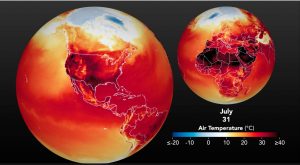 Globally, this has been the hottest summer on record (which has included the hottest day, hottest week, and hottest month ever recorded)—and it’s not just because of El Niño. The last decade (which included years with a heat-tempering La Niña) has also been the hottest decade ever recorded. Unlike the “heat waves” of the past, we are now experiencing more frequent “heat domes” with unprecedented, sweltering, record-shattering daytime and night-time temperatures, across large swaths of the planet, lingering for longer periods of time. The air, land, oceans and most other water bodies are now hotter than ever, with devastating and cascading consequences for all living things.
Globally, this has been the hottest summer on record (which has included the hottest day, hottest week, and hottest month ever recorded)—and it’s not just because of El Niño. The last decade (which included years with a heat-tempering La Niña) has also been the hottest decade ever recorded. Unlike the “heat waves” of the past, we are now experiencing more frequent “heat domes” with unprecedented, sweltering, record-shattering daytime and night-time temperatures, across large swaths of the planet, lingering for longer periods of time. The air, land, oceans and most other water bodies are now hotter than ever, with devastating and cascading consequences for all living things.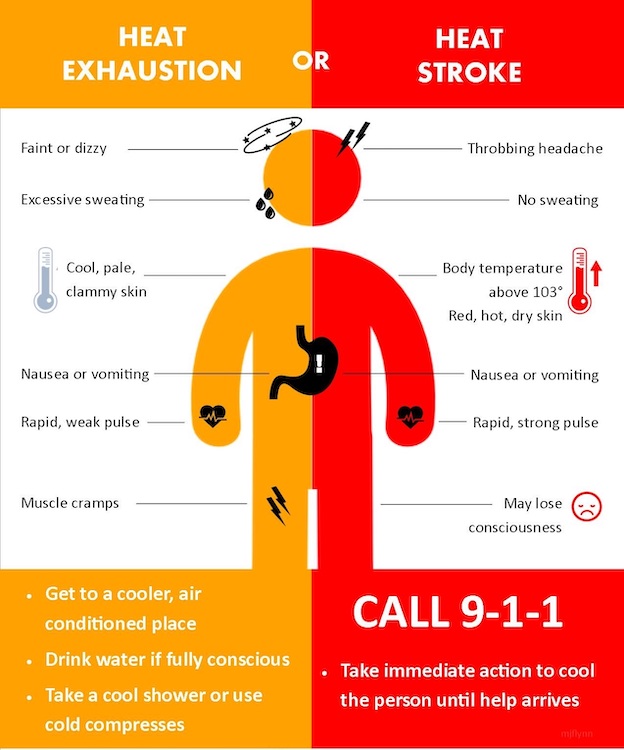
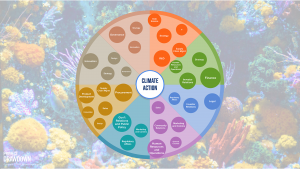
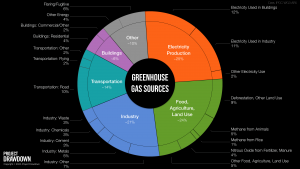
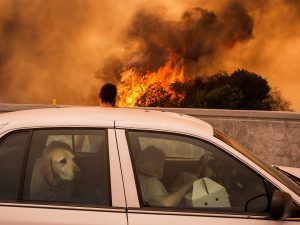
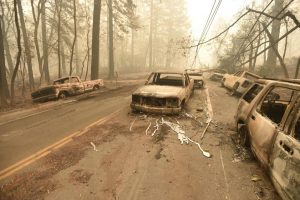
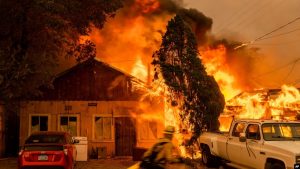
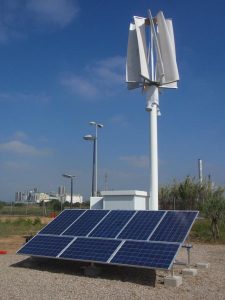

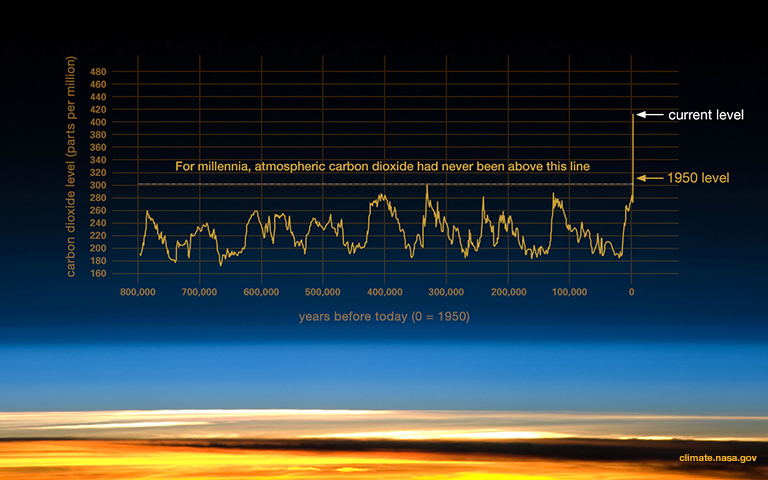

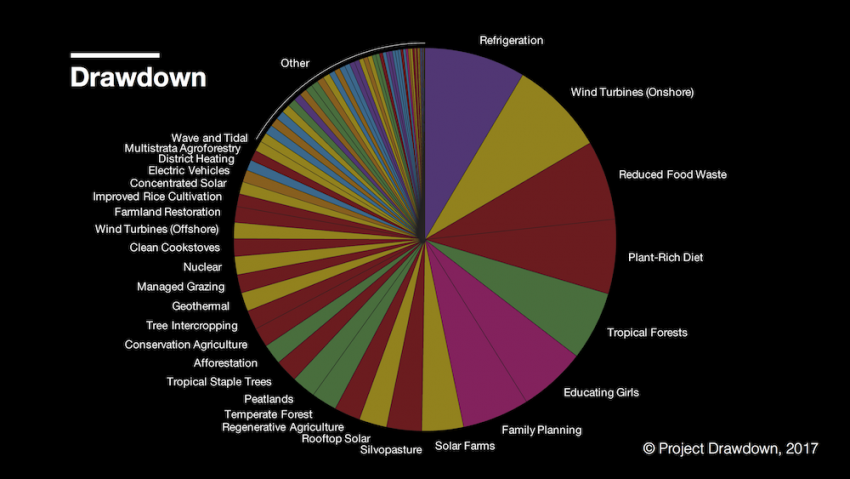
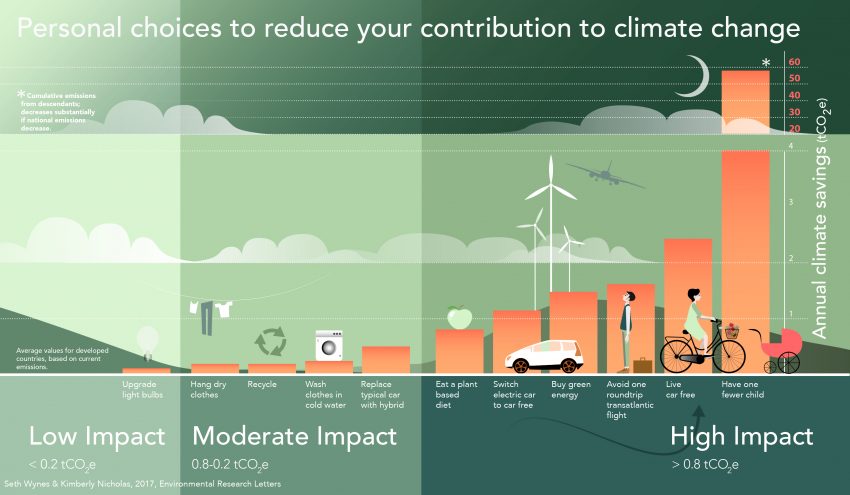
 The only thing that is truly certain in this life is that all of us will die. We don’t know when or how, but we do know that ultimately we cannot avoid death. Impermanence and death are inevitable, universal, and unavoidable parts of life.
The only thing that is truly certain in this life is that all of us will die. We don’t know when or how, but we do know that ultimately we cannot avoid death. Impermanence and death are inevitable, universal, and unavoidable parts of life.
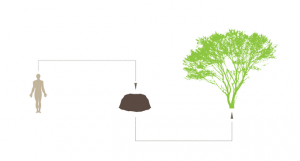
 NEW: 2021 update: Municipalities, States, and Countries that are Achieving, Approaching, or Committed to 100% Renewable Energy
NEW: 2021 update: Municipalities, States, and Countries that are Achieving, Approaching, or Committed to 100% Renewable Energy




